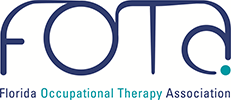Transition from the IFSP to the IEP: The Changing Roles of the Occupational Therapy Practitioner in Part C vs Part B of IDEA
 Transition from the IFSP to the IEP: The Changing Roles of the Occupational Therapy Practitioner in Part C vs Part B of IDEA
Transition from the IFSP to the IEP: The Changing Roles of the Occupational Therapy Practitioner in Part C vs Part B of IDEA
Pauline Kelly, OTD, OTR/L
Debra Misrahi, DrOT, OTR/L
There are many transitions for children and youth with disabilities in the early intervention and special education arenas. A major transition is that from early intervention to preschool. In this transition the child often moves from a family-based provision of services to the initiation of receiving services in a school setting. Part of this transition may involve a change of receiving occupational therapy as an early intervention service as indicated on an Individual Family Service Plan (IFSP) to receiving it as a related service as indicated on an Individual Education Plan (IEP). Douglas et al., (2022) found that this change is often a stressful time for caregivers of children with disabilities and that one source of this stress is the change in program philosophy between early intervention and early childhood special education. Understanding the differences between service provision in both early intervention and school -based practice as well as the changing therapists’ role in each setting can help alleviate some of this stress on families, however, and lead to a smoother transition.
Early Intervention.
According to the Unites States Department of Education (USDOE) The Individuals with Disabilities Education Act (IDEA) Part C was established to promote the development of infants and toddlers with delays or disabilities and to support their caregivers and families to support this development (USDOE, 2023). In Florida Part C services are administered by the Early Steps program. An Individual Family Service Plan (IFSP) is developed centering around families’ goals for their child while honoring families’ routines, schedules, and typical environments (Floridaearlysteps.com, n.d.). Services are available to infants and toddlers that have, or are at risk of, developmental delay, or have a diagnosed disability that has a high likelihood of causing developmental delay (AOTA, 2014)
In Part C, occupational therapy may be the primary service provided and even the only service provided but it can also be provided as part of a collaborative team (AOTA, 2014). The focus on family support is paramount and the occupational therapy practitioner (OTP) must focus on increasing the capacity of family members and caretakers to promote development in their child. Seven key principles developed by the OSEP TA Community of Practice-Part C Settings describe the following as paramount in the provision of early intervention services:
- Infants and toddlers learn best through everyday experiences and interactions with familiar people in familiar contexts.
- All families, with the necessary supports and resources, can enhance their children’s learning and development.
- The primary role of the service provider in early intervention is to work with and support the family members and caregivers in a child’s life.
- The early intervention process, from initial contacts through transition, must be dynamic and individualized to reflect the child’s and family members’ preferences, learning styles and cultural beliefs.
- IFSP outcomes must be functional and based on children’s and families’ needs and priorities.
- The family’s priorities, needs and interests are addressed most appropriately by a primary provider who represents and receives team and community support.
- Interventions with young children and family members must be based on explicit principles, validated practices, best available research, and relevant laws and regulations.
(Early Childhood Technical Assistance Center, 2024)
Services can be delivered in the home or in other natural environments of infants and toddlers including day care centers or other community centers (AOTA, 2014). With the focus on the provision of services in the natural context along with a family-centered focus, occupational therapy practitioners are ideal professionals to deliver these services as they align with occupational therapy domain and process.
Preschool Programs for Students with Disabilities
When children reach the age of 36 months, they must transition from IDEA Part C services. Although there are several options for this next phase, this article will focus on transitioning to Part B of IDEA for those children who are eligible to do so. Part B services are special education services that may be delivered in preschool programs housed in school settings. Under Part B the occupational therapy practitioner falls under the umbrella of related service providers. The role of the related service provider is to provide services “as may be required to assist a child with a disability to benefit from special education” (IDEA, 300.34(a) of Title 34, Code of Federal Regulations (34 CFR 300.34(a)).
The Occupational Therapy Practitioner’s Role in Transition from Early Intervention to Preschool.
There is a shift in the OTP’s role when children transition to preschool from Part C services. While services may have been provided in the natural context of the home environment in early intervention, this will shift to service provision in the natural context of the preschool classroom. This may be the student’s first experience outside of home-based care for some and their first engagement in the role of student. While the OTP may be the main service provider in Part C, they shift to a support service in Part B. Services in Part B are provided in the least restrictive environment (LRE) as determined by the student’s IEP. The OTP is actively involved with family members and caregivers in early intervention, but this interaction may become more limited in preschool. Here the teacher becomes the main point of contact for families and the OTP interacts regularly with all school staff but may have more limited interactions with families and caregivers.
Both the OTPs practicing in early intervention as well as those practicing in school-based practice can be a source of support for families, caregivers and school staff as needed during the transition process. A study by Myers (2008) found there were several barriers to both groups of therapists participating in this process, however, including a lack of understanding of the role of the therapist in this transition.
The OTPs practicing in early intervention can facilitate the transition process in several ways. They can begin to prepare the child for the upcoming transition to preschool. Focus of intervention can include identifying skills including motor, sensory, perceptual and ADL skills, for example, needed to engage in a preschool classroom environment (Orientlicher, 2017). Attending transition meetings, if possible, the OTP can serve as an advocate for the family by becoming well versed in the terms and procedures used in the transition process. They can also prepare the family to understand the changing role of the OTP from primary service provider to a support service and collaborative team member led by the classroom teacher.
The preschool OTP also has distinct roles after this transition has occurred. Rous, Myers, and Strickland (2007) note that children take a while to adjust to the expectations and context of the preschool environment. The OTP can assist classroom staff and families to be aware of this period of adjustment and assist in relieving anxiety and unrealistic expectations. Addressing the new context for appropriateness of tools, materials, and any adaptations that may be needed is another important role of the preschool OTP. Once the child has settled in the new school environment and with the appropriate consent, the preschool occupational therapy practitioner should assess the student to determine appropriate service delivery frequency and context in collaboration with the IEP team. The information from this assessment can also assist the IEP team to adjust goals to better align with the new program, environment, and student needs.
Occupational therapy practitioners are well suited to facilitate the transition from Part C to Part B services. Whether working on an individual, group, or systems level the OTP has the knowledge and skills necessary to assist families, students, and school staff to continue to foster learning and development. Following is a list of resources that OTPs working in both early intervention and school-based practice may find useful to inform practice when considering transition.
Resources:
- Florida Department of Education (2018). A booklet to help children and families transition from early steps at age three to other community programshttps://www.fldoe.org/core/fileparse.php/7690/urlt/fishbooklet.pdf
- Florida Department of Health Early Steps webpage https://www.floridahealth.gov/programs-and-services/childrens-health/early-steps/index.html
- Florida Administrative Code Provision of Occupational or Physical Therapy to Exceptional Students as a Related Service https://www.flrules.org/gateway/ruleNo.asp?ID=6A-6.03024
- AOTA FAQ: What is the Role of Occupational Therapy in Early Intervention https://www.ocecd.org/Downloads/AOTA%20Early%20Intervention%20FAQ%20Final3.pdf
- AOTA Slide deck: Role of Occupational Therapy with Infants, Toddlers, and Families in Early Intervention https://ectacenter.org/~pdfs/eco/AOTA_slides_on_role_9_22_09.pdf
- Workgroup on Principles and Practices in Natural Environments, OSEP TA Community of Practice: Part C Settings. (2008, March). Seven key principles: Looks like / doesn’t look like https://ectacenter.org/~pdfs/topics/families/Principles_LooksLike_DoesntLookLike3_11_08.pdf
References
American Occupational Therapy Association. (2014). Role of occupational therapy with infants, toddlers, and families in early intervention [PowerPoint slides]. Retrieved from https://ectacenter.org/~pdfs/eco/AOTA_slides_on_role_9_22_09.pdf
Douglas, S. N., Hedda, M., & Schultheiss, H. (2022). A Meta-synthesis of Caregivers’ Experiences Transitioning from Early Intervention to Early Childhood Special Education. Early Childhood Education Journal, 50(3), 371-383. https://doi.org/10.1007/s10643-021-01165-6
Early Childhood Technical Assistance Center (2004). Early intervention services: Key principles and practices. https://ectacenter.org/topics/eiservices/keyprinckeyprac.asp
Florida Early Steps (n.d.). Individualized family support plans. https://floridaearlysteps.com/individualized-family-support-plans/
Individuals with Disabilities Education Act. 300.34(a) of Title 34, Code of Federal Regulations (34 CFR 300.34(a). https://sites.ed.gov/idea/regs/b/a/300.34/a#:~:text=Related%20services%20means%20transportation%20and,services%2C%20psychological%20services%2C%20physical%20and
Myers, C. T. (2008). Descriptive study of occupational therapists' participation in early childhood transitions. The American Journal of Occupational Therapy, 62(2), 212-20. doi:https://doi.org/10.5014/ajot.62.2.212
Orentlicher, M. L., Case, D., Podvey, M. C., Myers, C. T., Rudd, L. Q., & Schoonover, J. (2017). Frequently asked questions (FAQ): What is occupational therapy’s role in transition services and planning? Bethesda, MD: American Occupational Therapy Association. https://www.ocecd.org/Downloads/AOTA%20Early%20Intervention%20FAQ%20Final3.pdf
Rous, B., Myers, C.T., & Stricklin, S.B. (2007). Strategies for supporting transitions of young children with special needs and their families. Journal of Early Intervention, 10(1), 1-18.
USDOE. (2023, December 13). The idea part C and early learning/early childhood. Individuals with Disabilities Education Act. https://sites.ed.gov/idea/early-learning-early-childhood/
